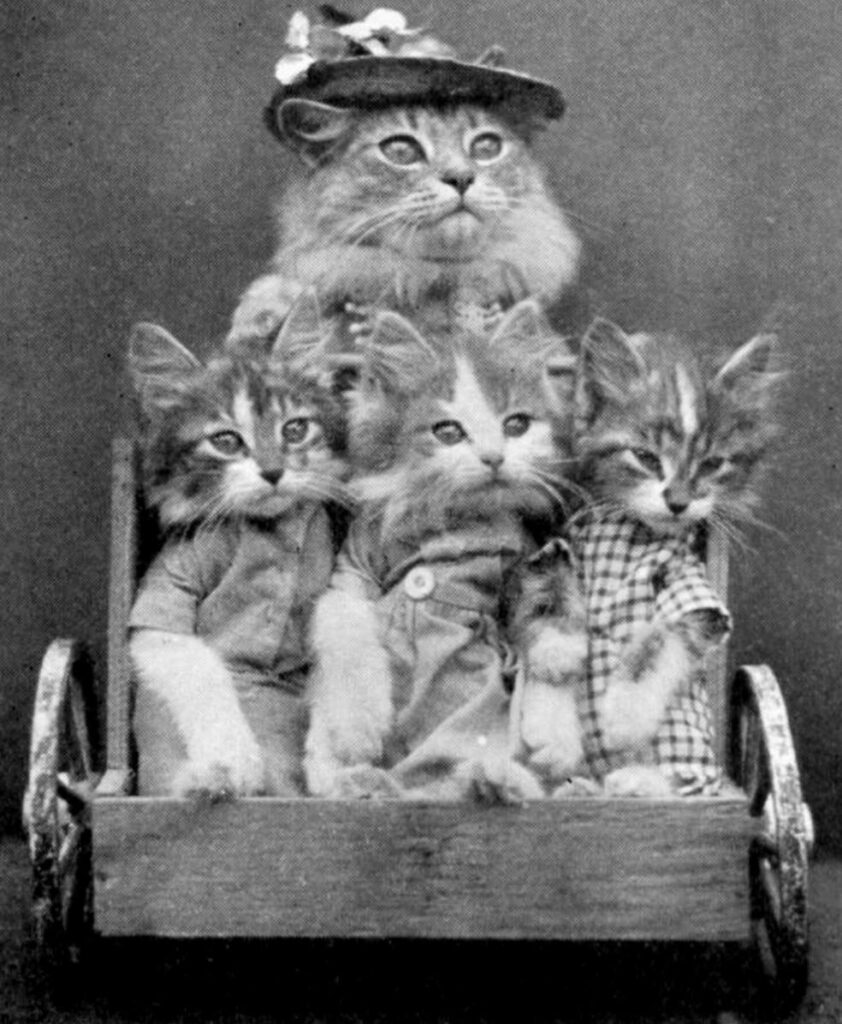
The Algonquin Hotel may have had Billy and Rusty the cats, and the Hotel Lincoln may have had Abe the cat, but these male cats could not be mothers. Minnie was not only the mascot of the Hotel St. George, but she was a mother to 160 kittens.
Minnie moved into the Hotel St. George in 1921 with her first owner. Over the year, the beautiful tiger cat lived with four different owners, but she never left the hotel.
That is, she never left the hotel until it was time for her quarterly date with Tom cat.
Here is how a reporter for the Brooklyn Daily Eagle summarized her life story:
Minnie, it seems, was once a young tiger kitten with nothing to distinguish her except a sort of fatal beauty. There were many feline blades on the Heights who aspired to her paw, but she would have nothing to do with them. She was a home-loving kitten and didn’t seem to care for male company. That’s what she said and thought. But one day Tom Cat came along and–well, she married him.”
Every four months, Minnie would have four kittens. When you do the math, that’s 160 kittens in 10 years!
Although Minnie chose to stay at the Hotel St. George, all her kittens went to good homes in the Brooklyn Heights neighborhood. Many of them had clever names related to the hotel, such as Dinner Dance, Parlor, and Salon. The various owners of Minnie’s kittens kept a running record of her births: every time she had another litter, they would add a checkmark in their journals.
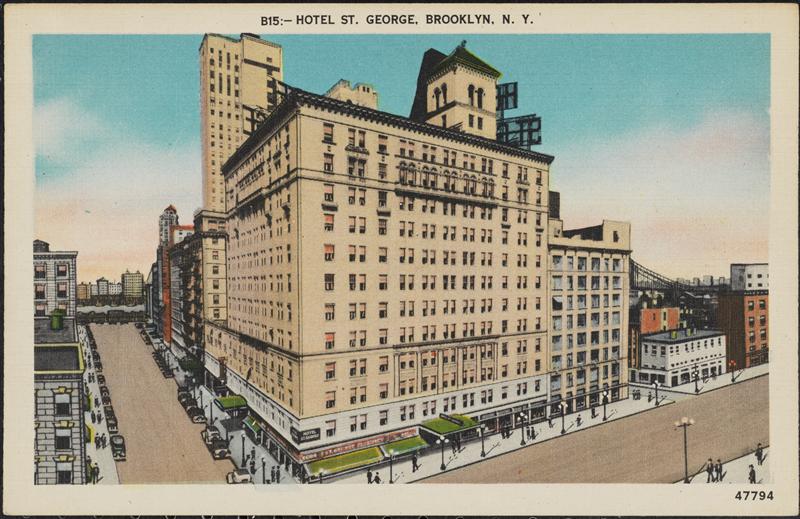
Sometime in 1940, Mrs. Edward D. Mudge (Ann) approached Martin Samuels, manager of the Hotel St. George, which was just five blocks from her home. “Let’s have a cat show,” she told him. “And let’s ask not only champions but the grocer’s cat and the police station mouser and poor children’s pets.”
Mr. Samuels, a reported pet lover, agreed to her suggestion. “Fine,” he said. “The hotel is yours.”
I have a feeling some of Minnie’s offspring participated in the inaugural Brooklyn Heights Neighborhood Pet Cat Show. In fact, today, there are no doubt numerous great-great-grand kittens related to Minnie in Brooklyn Heights and probably across the country.
A Brief History of the Hotel St. George
The Hotel St. George was the brainchild of William Tumbridge, an English, South-African born sailor who served with the US Navy and worked at the Brooklyn Navy Yard. Following a short maritime career, William took a job at an advertising firm on Wall Street, only to return to the sea later in life, many years after his marriage to Lucinda Finck, with whom he had four children.
In 1885, William bought a plot of land on Pineapple Street, between Hicks and Henry Streets. This block had once been the site of a roadside inn called the St. George’s Tavern, which operated during the Revolutionary era from 1774 to 1783. The celebrated tavern on what was then called Tower Hill was opened by John Cornell in May 1774, and was a favorite rendezvous for Revolutionary War solders.
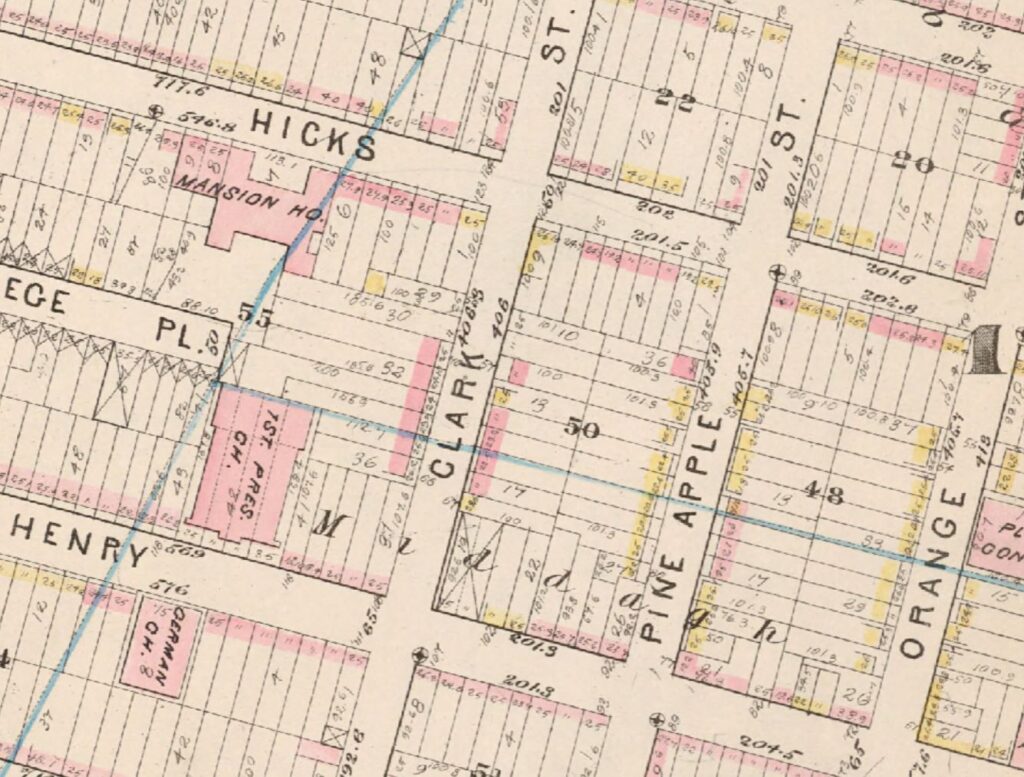
This land had been part of the Middagh (Midder) Farm, bounded by Fulton, Hicks, and Pierrepont Streets. (Back then, Fulton Street, aka the Old Ferry Road, was a cow path leading to and from the ferry.)
The farm dates back to about 1657, when Aert (aka Anthonze or Teunsen) Middagh, a hatter from Utrecht in the Netherlands, came to the new settlement. He and his wife, Brekje Hansen Bergen, married around 1861 and joined the Reformed Dutch Church in 1664.
During the Revolution, the lands in this area were used as a burial ground for British soldiers and sailors; the graves were leveled off at the end of the war when the Hicks family first established their home.
Alas, the Middaghs were staunch Royalists. Although they were able to retain their farm lands after the war, their other value property in Brooklyn was confiscated.
In the 18th century, John Middagh, also a hatter, built what was called “John Middagh’s big house,” which stood on the southeast corner of present-day Fulton and Henry Streets. The first Church of England services in Brooklyn took place in the Middagh barn behind the house until 1787.
Incidentally, it was John Middagh and his grocer son-in-laws, the Hicks brothers, who laid out and named such streets as Pineapple, Orange and Cranberry, reportedly to remind Brooklyn residents that these exotic fruits were available at their market.

Throughout the 1800s, large landowners in Brooklyn Heights began dividing their property into plots and roads. A criminal code was passed in 1821 to deal with a pressing problem: sheep, bulls, pigs, and hogs running at will through the streets. Fines ranged from 25 cents for an at-large sheep to $5 for a bull.
Getting back to the Hotel St. George…
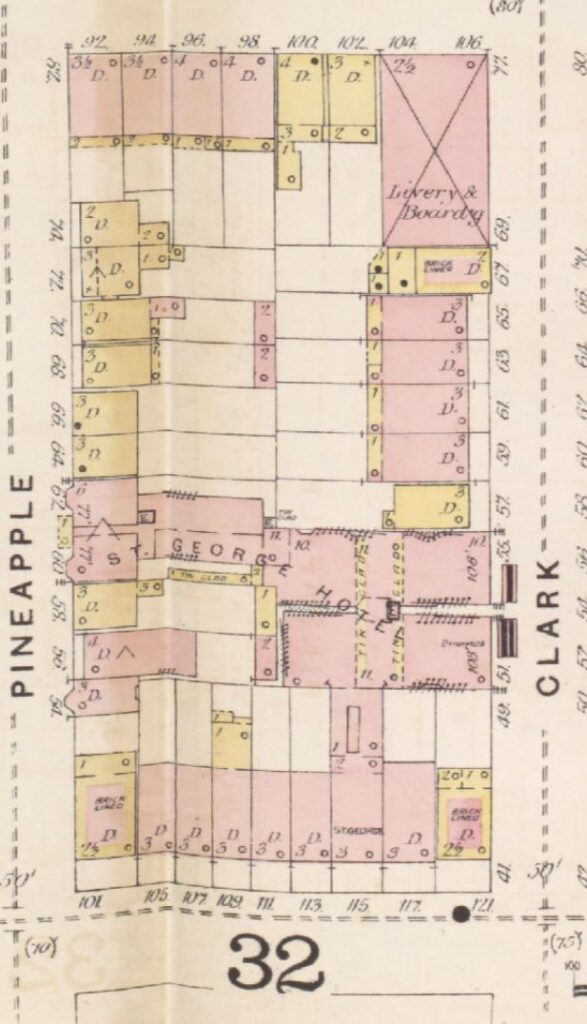
Captain William Tumbridge built his original 10-story Hotel St. George, which was the one of Brooklyn’s tallest buildings, facing Pineapple Street. Over the next 15 years, he continued to purchase more land and expand the hotel.
Eventually, the hotel comprised eight interconnected buildings and more than 1000 guest rooms. The St. George even had its own power plant, and was one of the first hotels to be lighted by electricity.
In addition to having rooms for transient guests, the Hotel St. George was also a residential hotel, where singles, couples, or even families could rent rooms or entire suites as their primary residence. Hence, Minnie the cat lived with many owners who called the hotel their home.
Captain William Tumbridge died in 1921, which is the same year that Minnie the cat moved in (hmmm). Seven years later, Emory Roth constructed the St. George Tower annex, making the St. George the largest hotel in the world.
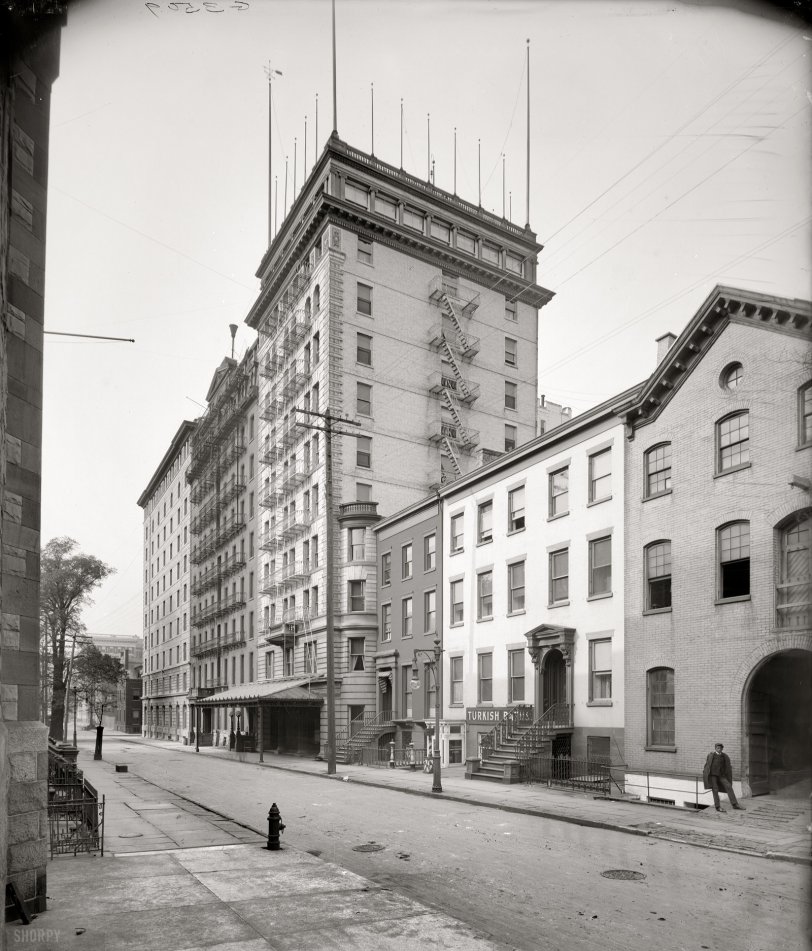
With nine individual buildings occupying an entire city block, its amazing views, and salt-water pool, the hotel was the place to stay in Brooklyn during much of the mid-20th century.
By 1995, 8 of the buildings had been converted for residential use, and of those, 2 had been vacated and remained vacant for years. The 10-story Clark Building and 12-story Marquee Building became home to vagrants, who used the interconnecting cellar to move from building to building.
At about 3:30 a.m. on August 27, 1995, the Brooklyn central office received a call reporting smoke in the area around the St. George Hotel.
Fire that originated in the Clark Building spread rapidly through holes in the floors and open elevator shafts, and the vandalized standpipes were useless. The firefighters left the building and began an exterior attack.
More than 700 firefighters and 100 companies ultimately responded to the 16-alarm fire. The Clark Building sustained the most damage and had to be demolished.
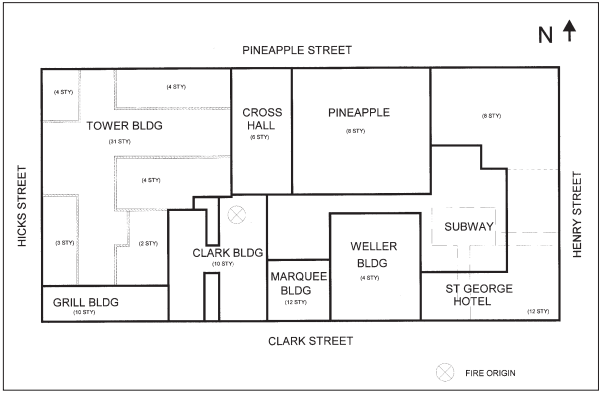

Today, the historic hotel houses more than 1,400 students attending area colleges such as NYU, Pace, New York Law School, and The New York Conservatory for the Dramatic Arts. The 30-story St. George Tower is now a residential cooperative building.




